For centuries, the people of Kerala have lived in Nalukettu houses, which are rich in traditional art and architecture. These homes are designed on a symmetrical grid, with the four wings situated around a central courtyard. Each wing has a specific purpose and is divided into several rooms, with the main entrance facing east.
Nalukettu homes are known for their intricately carved doors and windows, as well as their ornate interiors. The main entrance of the home is often decorated with murals or paintings and often features motifs or latticework. The walls of each room are painted in varying colours and patterns, which is meant to bring stability and harmony to the home.
Nalukettu House: Design and Style
In Nalukettu, 'Nalu' signifies four and 'kettu' indicates built-up sides. A Nalukettu home is large and spacious, located in the centre of a complex with only one level.
The Kerala Nalukettu houses are also known as tharavadu, kovilakam, kottaram, meda, or illam, depending on the caste.
The four main building blocks of a Nalukettu home are:
Vadakkini (northern block)
Padinjattini (western block)
Kizhakkini (eastern block)
Thekkini (southern block)
To accommodate large joint families or to demonstrate an abundance of wealth, some people construct Ettukettu (meaning eight blocks) and Pathinaaru kettu (representing sixteen blocks). The house in Ettukettu would have two central courtyards, whereas the house in Pathinarukettu would have four central courtyards. The Nairs and Namboodiris, who ruled with wealth and influence in the 18th and 19th centuries, constructed these structures during that time.
Components of a Kerala Nallukettu Home Design
The various components of a Nallukettu home are:
Padippura: This is to the compound, typically marked by a stair and a tiled roof. One of the most distinctive aspects of the building is the top nalukettu gate, which is made up of an intricate gopuram that resembles a temple.
Poomukham: A space with tiled roofs and supporting pillars.
Verandah Chuttu: A hallway around the home.
Kulam: This is a small Lotus pond at the end of the Chuttu Verandah. It is thought that having this body of water nearby improves the flow of energy inside the home.
Nalukettu House: Construction Materials
Nalukettu homes are traditionally constructed using locally available materials such as Teak or wood from wild jackfruit trees, red bricks, and mud. The walls are made of laterite stones held together by a mixture of mud and cow dung, which provides insulation and helps keep the interior cool.
The roof is made of clay tiles, supported by wooden beams and columns, and the flooring is typically made of compacted earth or a mixture of cow dung and sand. Wood is widely used in the interiors for carvings and furnishings. These materials are sustainable, cost-effective, and in line with the traditional building practices of the region.
All naalukettus have gabled windows on the top that always ensured cross-ventilation and let adequate light into the attic, while extended rafters provide enough protection from Kerala's notoriously strong rainfalls.
Kerala Nalukettu House: Modern Lifestyle
The traditional Nalukettu architecture, once prevalent in joint-family homes in Kerala, has been gradually replaced by modern homes as nuclear families become more common. However, several modern homes in Kerala have started incorporating the traditional Nalukettu architecture.
Several modern Kerala nalukettu house plans are being developed based on the concepts of open architecture. Many aspects of ancient Kerala homes, including sloping roofs, a tiny veranda supported by tall pillars, and a mini courtyard in the centre, have been incorporated into these homes.
Apart from houses, traditional nalukettu home design has inspired hotels, restaurants, and spas. Certain characteristics of contemporary house designs are modified to fit the modern lifestyle. Traditional components like wooden furniture, pillars, and courtyards are incorporated into modern residences with an updated structural architecture.
Read on:
Kerala Nalukettu House - Image Gallery
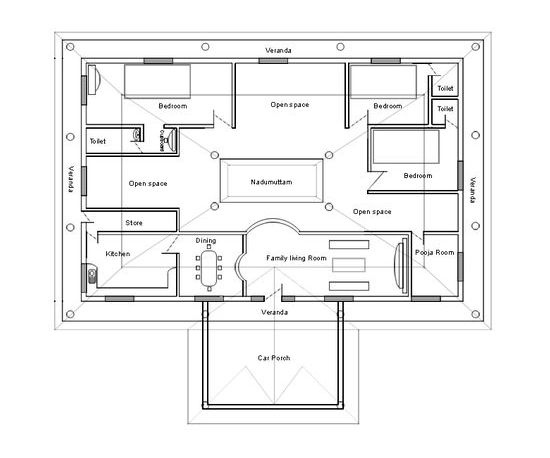 3 bedroom nalukettu house plan (Source: Pinterest)
3 bedroom nalukettu house plan (Source: Pinterest)
 Nalukettu house with central courtyard and Tulsi plant (Source: Pinterest)
Nalukettu house with central courtyard and Tulsi plant (Source: Pinterest)
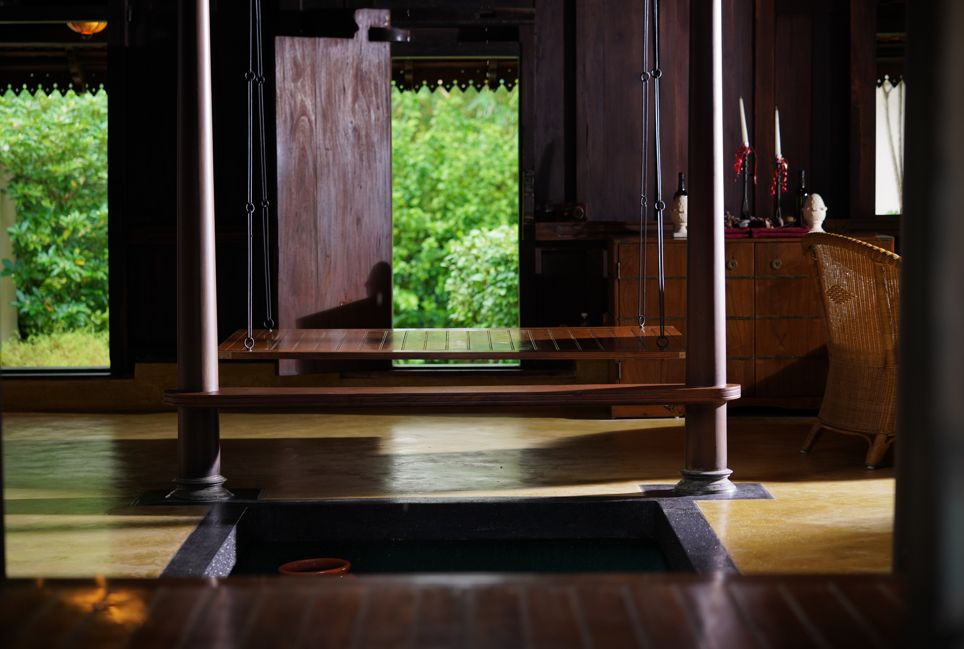 Inside look of a traditional Kerala Nalukettu house with a swing
Inside look of a traditional Kerala Nalukettu house with a swing
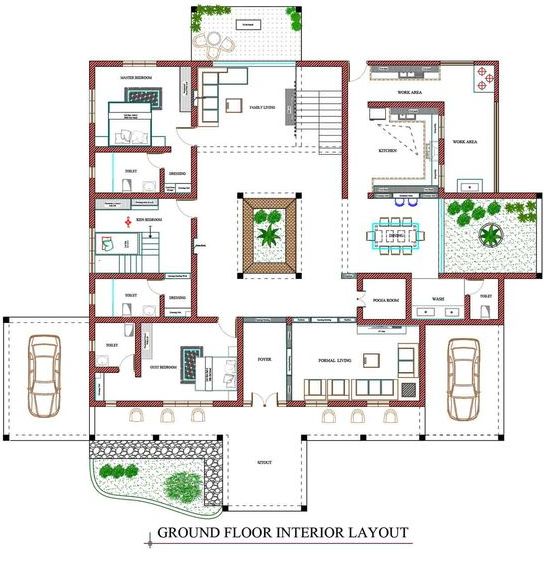 Kerala Nalukettu house plan 3D (Source: Pinterest)
Kerala Nalukettu house plan 3D (Source: Pinterest)
 Kerala Nalukettu house with nice looking outside view (Source: Pinterest)
Kerala Nalukettu house with nice looking outside view (Source: Pinterest)
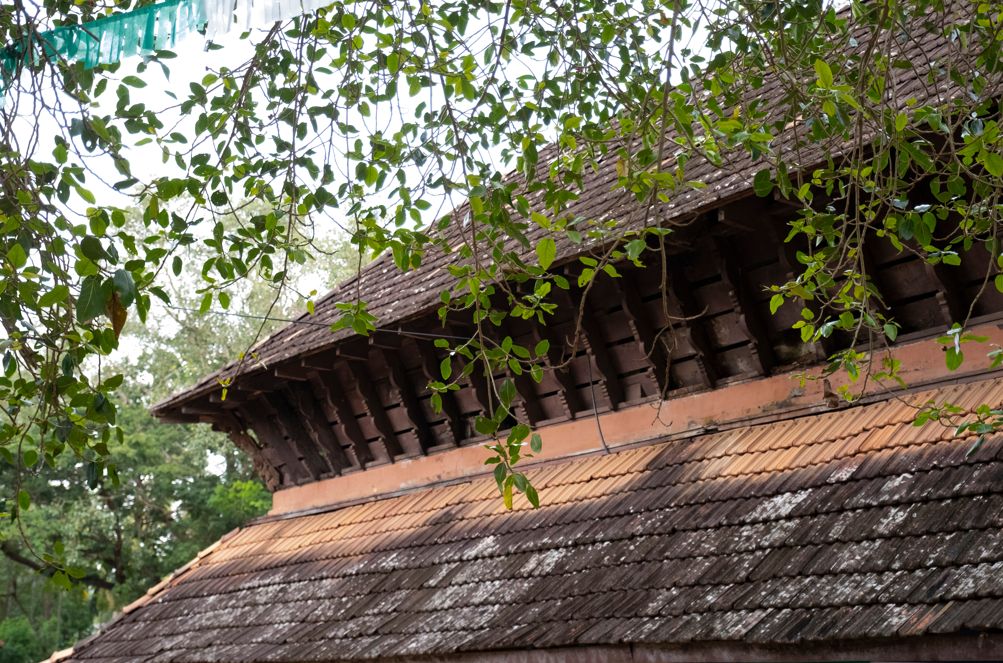 Outside look of windows of Nalukettu house
Outside look of windows of Nalukettu house
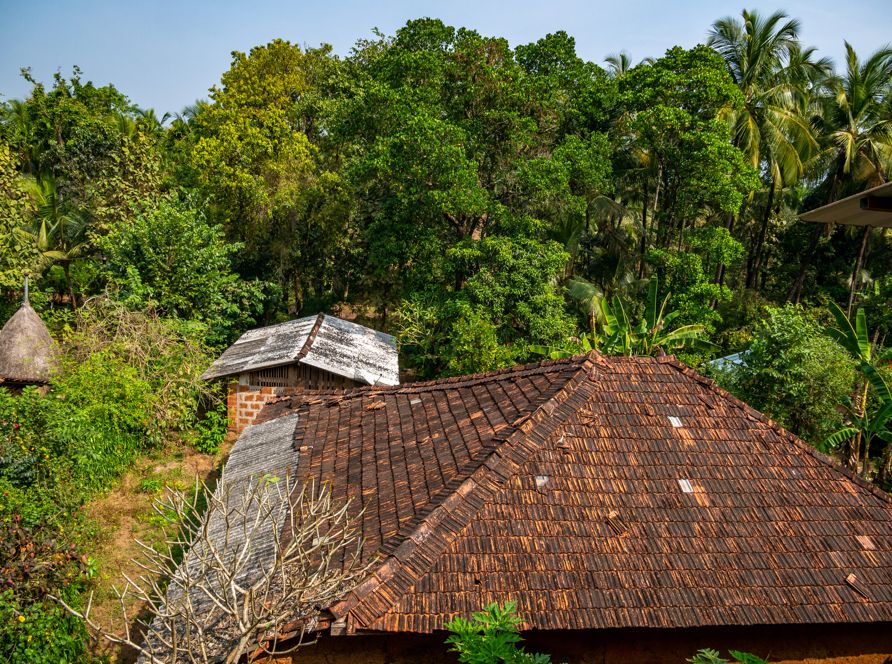 Top view of Kerala Nalukettu house
Top view of Kerala Nalukettu house
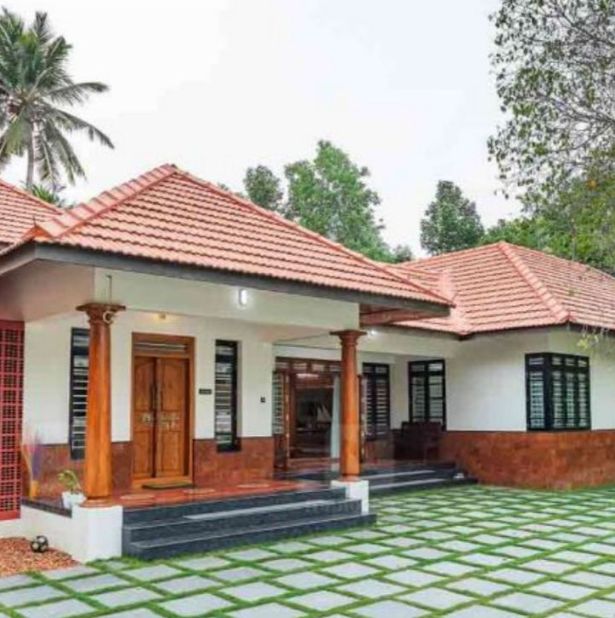 Modern style Nalukettu house (Source: Pinterest)
Modern style Nalukettu house (Source: Pinterest)
Final Words on Kerala Nalukettu House
Nalukettu houses are architectural wonders that are an important part of Kerala's cultural heritage. These house designs allow more light and fresh air into the home, keeping it highly well-ventilated even during hot summers. The utilisation of local materials such as laterite stone, wood, clay, and bamboo further makes Nalukettu homes environmentally friendly.
Related posts:
Heavy rains triggered destructive floods and landslides in Darjeeling and North Bengal, claiming lives, destroying homes, collapsing roads and bridges, and displacing communities. Rescue efforts are ongoing amid challenging terrain and forecasted rains.
IIT Kanpur’s three-day literary and cultural festival Akshar 2025 began with lectures on Premchand and folk traditions, ghazal performances, storytelling sessions, and musical acts—celebrating India’s linguistic and artistic heritage. Visit KeyMyHome and WeddSmart for more.

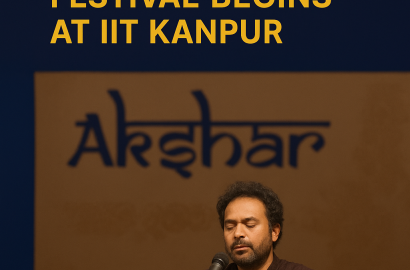
 Crushing Rains: Darjeeling & North Bengal Devastated by Floods and Landslides
Crushing Rains: Darjeeling & North Bengal Devastated by Floods and Landslides
 “Akshar 2025” Festival Sparks Literary & Cultural Renaissance at IIT Kanpur
“Akshar 2025” Festival Sparks Literary & Cultural Renaissance at IIT Kanpur
 Global Markets Show Signs of Caution Amid Elevated Risk Sentiment
Global Markets Show Signs of Caution Amid Elevated Risk Sentiment
 UK-India Defence & Trade Deals Deepen Ties: A New Chapter in Strategic Partnership
UK-India Defence & Trade Deals Deepen Ties: A New Chapter in Strategic Partnership
 India Extends Deadline for US LPG Import Tender: Strategic Implications and Challenges
India Extends Deadline for US LPG Import Tender: Strategic Implications and Challenges